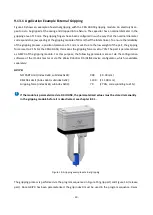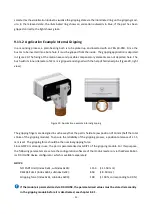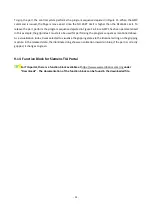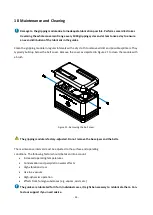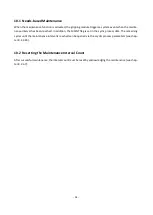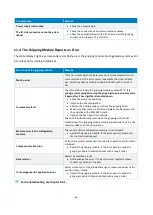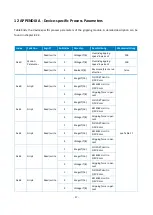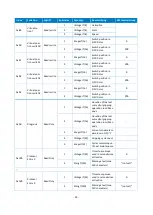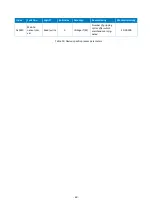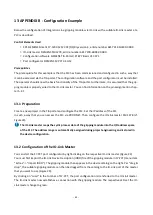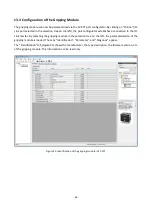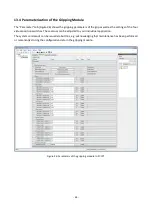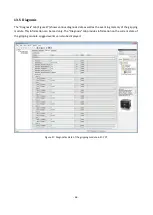
- 51 -
selected as the visualization index to visualize the gripping state via the illuminated ring on the gripping mod-
ule: In the released state, the illuminated ring shows an animation outwards in blue, if the part has been
gripped correctly, the light shows green.
9.13.2
Application Example Internal Gripping
In a mounting process, a plain bearing bush is to be picked up and inserted with an CRG 30-050. Since the
bush is to be inserted into a bore hole, it must be gripped from the inside. The gripping application is depicted
in Figure 20. The fixing at the motion axes and possible compensatory elements are not depicted here. The
bush with its inner diameter of 22 mm is gripped and aligned with the help of hardened pins (Figure 20, right
view).
The gripping fingers are designed in such a way that the part is held at a jaw position of 10 mm (half the total
stroke of the gripping module). To ensure the reliability of the gripping process, a position tolerance of ± 1.5
mm is set. The gripping force should be the nominal gripping force.
Since GRIP 0 is already in use, the part is parameterized as GRIP 1 of the gripping module. For this purpose,
the following parameters are set via the configuration software of the IO-Link master or via the Weiss Robot-
ics DC-IOLINK device configurator, which is available separately:
GRIP 1:
NO PART Limit (index 0x61, subindex 0x01):
1150 (= 11.50 mm)
RELEASE Limit (index 0x61, subindex 0x02):
850 (= 8.50 mm)
Gripping force (index 0x61, subindex 0x03):
100
(= 100%, corresponding to 30 N)
If the module is parameterized via DC-IOLINK, the parameterized values must be stored remanently
in the gripping module before it is deactivated, see chapter 8.2.1.
Figure 20: Application example internal gripping














